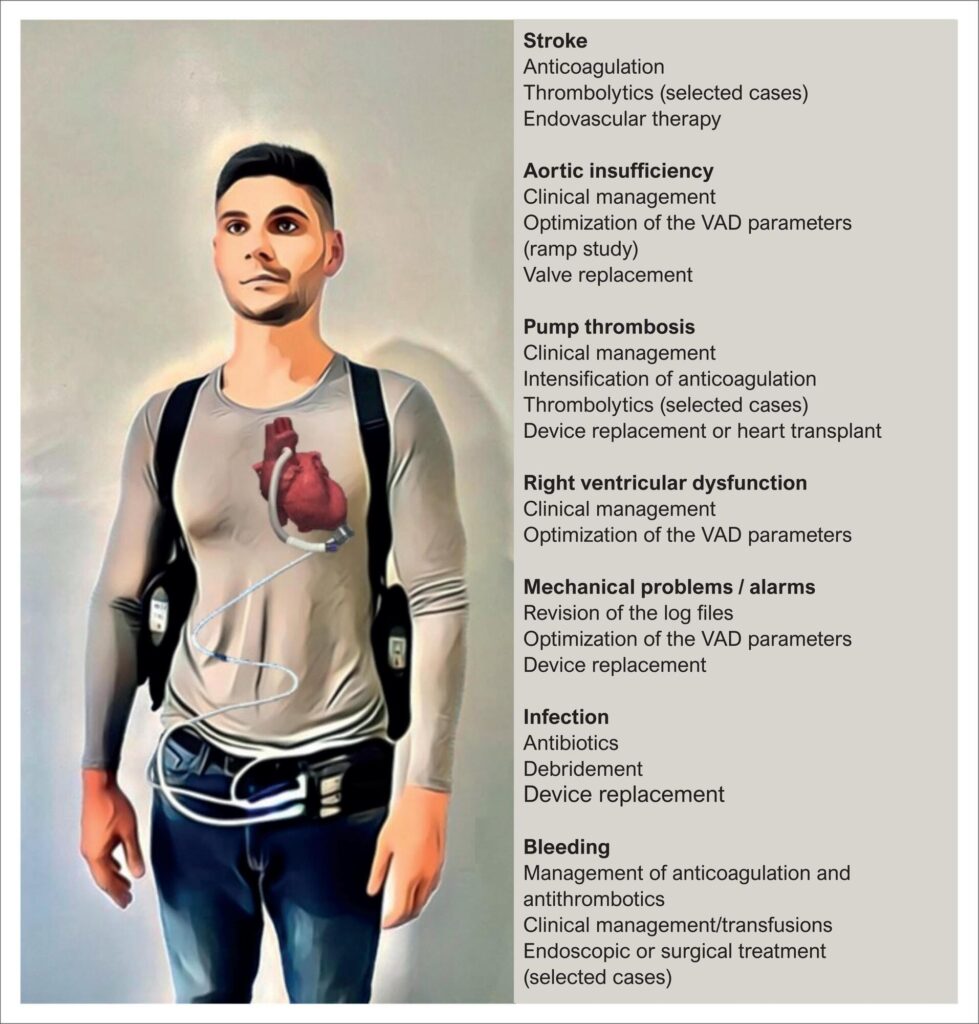ABC Heart Fail Cardiomyop 2022; 2(2): 182-191
Long-Term Ventricular Assist Devices – Main Complications in Contemporary Clinical Practice
Abstract
Advanced heart failure (HF) is associated with reduced quality of life and high hospitalization and mortality rates. Ventricular assist devices (VADs) promote an increase in cardiac output, and consequently improvements in body functions, functional capacity and patient survival. However, the use of VAD may be associated with complications and require systematic and specialized care. Ischemic and hemorrhagic stroke is among the most feared complications and its occurrence is related to thrombus formation in the pump. The connection between the driveline and the external power source is a potential source of infection that may extend to the mediastinum. Management of bleeding caused by anticoagulation therapy may be challenging, since discontinuation of the treatment may lead to thrombus formation. Aortic insufficiency and right ventricular dysfunction may occur, particularly in prolonged periods of support, requiring optimization of VAD parameters and clinical management. Although uncommon, mechanical failure of the VAD may occur and require replacement of the pump or even heart transplant. Thus, identification and management of the main complications of VAD in patients with advanced HF is needed, so that strategies for prevention and rigorous clinical follow-up can be implemented. This review aims to summarize the main adverse events in patients with long-term VAD.
987


